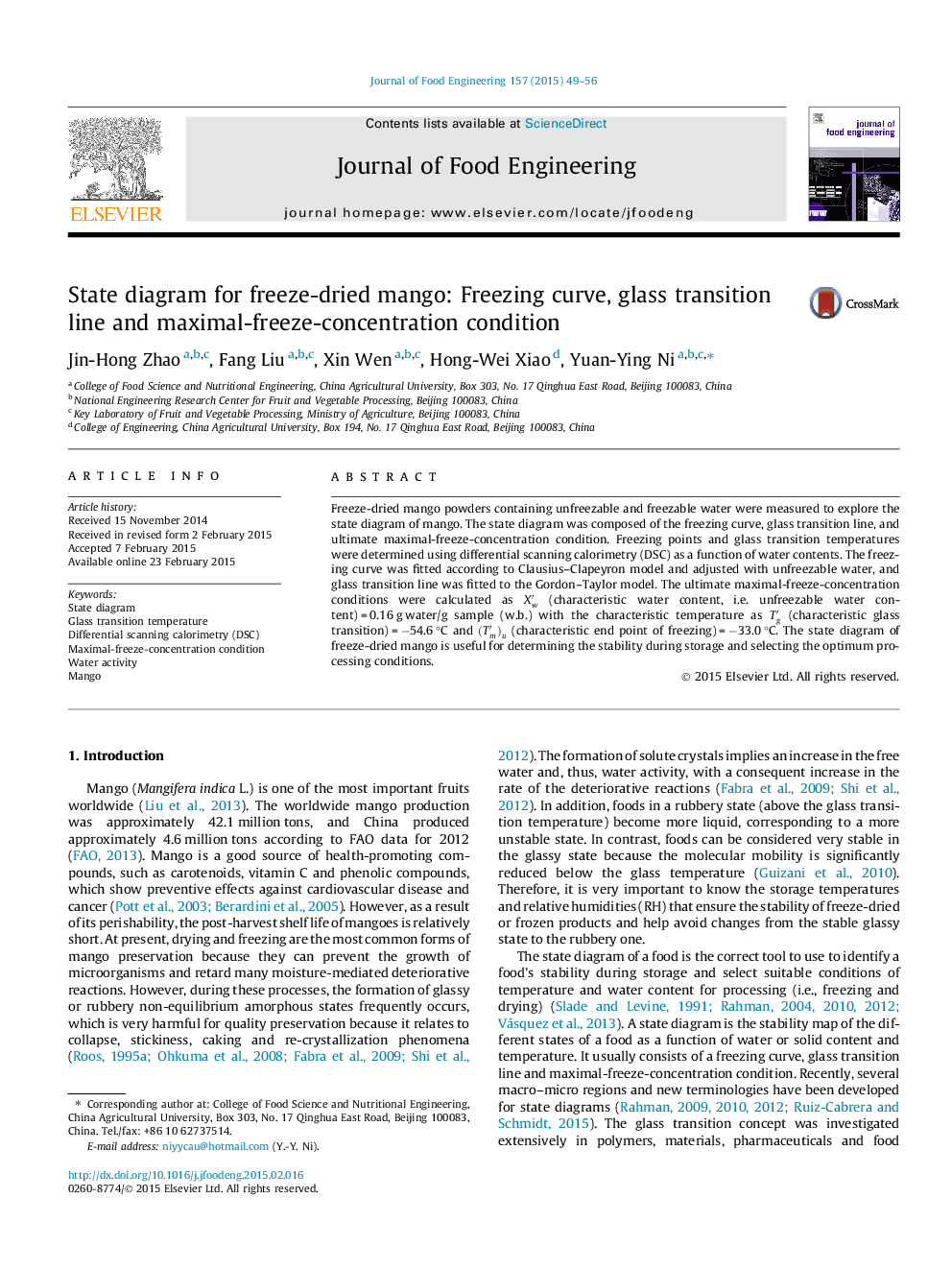| Article ID | Journal | Published Year | Pages | File Type |
|---|---|---|---|---|
| 222901 | Journal of Food Engineering | 2015 | 8 Pages |
•A complete state diagram of mango was developed.•State diagram included three characteristic temperatures.•Maximal-freeze-concentrated water content was 0.16 g/g with (Tm′)u being −33.0 °C.•Characteristic glass transition temperatures Tg′ and Tg″ were −54.6 and −43.2 °C.•GAB Xm of adsorption and desorption isotherms were 0.109 and 0.145 g/g (d.b.).
Freeze-dried mango powders containing unfreezable and freezable water were measured to explore the state diagram of mango. The state diagram was composed of the freezing curve, glass transition line, and ultimate maximal-freeze-concentration condition. Freezing points and glass transition temperatures were determined using differential scanning calorimetry (DSC) as a function of water contents. The freezing curve was fitted according to Clausius–Clapeyron model and adjusted with unfreezable water, and glass transition line was fitted to the Gordon–Taylor model. The ultimate maximal-freeze-concentration conditions were calculated as Xw′ (characteristic water content, i.e. unfreezable water content) = 0.16 g water/g sample (w.b.) with the characteristic temperature as Tg′ (characteristic glass transition) = −54.6 °C and (Tm′)u (characteristic end point of freezing) = −33.0 °C. The state diagram of freeze-dried mango is useful for determining the stability during storage and selecting the optimum processing conditions.
